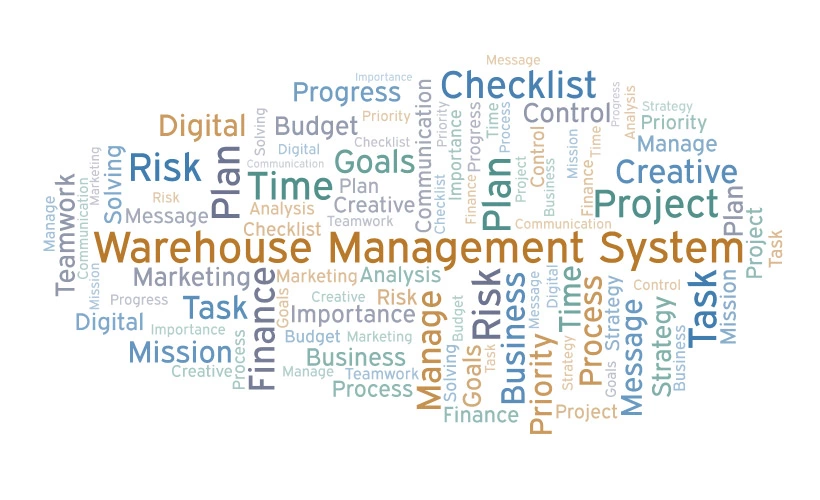How to Succeed Integrating A WMS Or WCS With An ERP
Successful integration of a WMS or WCS with an ERP requires knowledge of the process flow and data flow within the operation. Then, it is necessary to identify and understand where the pain points occur. Every warehouse or distribution center has unique challenges. For example, some customize their ERPs to control allocation of inventory.
They might prefer to spread inventory across multiple orders, portioning some to every customer instead of applying an entire shortage to one account. For an ERP to dictate inventory allocation like this it must be integrated with a WMS/WCS so that the information can be shared efficiently and effectively. The ERP needs to tell the Warehouse Management System (WMS)/ Warehouse Control System (WCS) what lot to allocate and pick and pack, and not only the quantity ordered, but also the distribution of that quantity across all of the orders. Understanding the unique role of each component—the ERP, WMS, and WCS—is vital. For instance, if an ERP is the system of record, the integrity of that system must be maintained.
What are the functional requirements that need to be defined with an ERP?
When integrating a Warehouse Management System (WMS) with an ERP, the functional requirements that need to be defined include any touch points between the two systems. These typically include the part master, receipts, orders, and uploads (put-away, pick/pack/ship, adjustments). Note: It is essential to identify the touch points in both directions—from the WMS upstream to the ERP, and from the WMS going downstream to the WMC or other peripherals. For example, if an ERP is the system of record for part number information, no downstream systems should be permitted to edit or create new part numbers. This is a best practice and ensures that the part number and part profile information are maintained in one system, the ERP.
In most cases, an ERP is also the system of record for procurement and order management and order entry. This receipt information is another touch point from ERP to a WMS or WCS. It is “inbound information” about inventory coming into the facility. There is also “outbound information,” which includes sales orders, production orders, and transfer orders, that require the system in a distribution center to pick the inventory and pack/ship it, or in a manufacturing facility, pick the inventory out of the stockroom and deliver it to assembly or the manufacturing floor.
Another important functional requirement to consider is inventory adjustment and deciding which system is the system of record for inventory is key. Some ERP systems can instruct a WMS or WCS to decrement inventory; however, it is more common for the WMS and WCS to be the system of record of where inventory is stored. The ERP system has the aggregate quantity on hand, but the WMS/WCS tracks the inventory at discrete locations and is best-suited for cycle counting, inventory counting, or physical counts.
What are the mechanics of integrating a WMS with ERP?
The basic mechanics of integrating a WMS with an ERP usually include staging tables, webservice, flat files, and other specific methods of integration depending on the ERP (e.g., RFC in SAP or message queues in other systems).
The term “staging tables” refers to database tables that are shared between an ERP and a WMS or WCS. These tables are either in the ERP database or the WMS or WCS database. They are called staging tables because they are not internal tables that the systems would use to process their own business logic and perform their own functions. Imagine a wall between these staging tables and the rest of the respective system. This imaginary wall, which is actually a gatekeeper requiring validation, ensures that a WMS cannot, for instance, directly update data in an ERP table. Likewise, an ERP cannot directly update data in a WMS table. Instead, all updates require a set of staging tables to protect both sides.
Integrating a WMS with an ERP often also requires webservices and flat files. The webservices needed are real-time and implementing them requires a special IT skill set. The flat file data can be in XML format so that it can easily be used in EBI transactions. Having lower-level systems that can create flat files in XML format can be a significant time-saver.
All of these methods of integration depend on the particular ERP being used. For example, most ERPs use remote function calls (RFC) for messaging, but others have their own unique message cues that must be adopted. Even so, the communication piece of integrating a WMS is fairly straightforward. The goal is that once a messages is sent by one system, the other system responds within the timeframe expected and all functions run according to spec.
Of course, not everything runs according to plan 100% of the time. This is especially true in distribution and manufacturing environments where tasks and processes are fast paced with many dependencies. Often, when one process doesn’t work perfectly, there is a domino effect. That is why, as part of the design phase of an integration, it is crucial to consider what could go wrong. In fact, working on error detection and recovery is a key part to any integration effort and usually, more time is spent designing the what-if scenarios than the actual touch points. This time and effort are worthwhile in the long run. Being able to detect and recover from errors in any integration can make the difference between a successful project with happy users and one where the users don’t want to even talk about their experience.
Integrating a WCS to an ERP or WMS
A WCS is a warehouse control system, and it can be integrated to an ERP, a WMS, or directly to material handling equipment, such as a VLM, a carousel, or an ASRS. There are some WCS systems that use a standard application programmable interface (API). These systems offer little flexibility in terms of integration and are not as complex as an interface to an ERP might be. In most cases, the WCS integration can be done with direct device control. That means, instead of communicating at a high level to another application, the integration can occur directly to material handling equipment. But since every equipment manufacturer has their own proprietary interface, it is critical to work with the equipment manufacturer to ensure understanding of the entire architecture.
Often the WCS is integrated to control inventory within these devices. For instance, in a vertical carousel, a WCS could manage each bin location, keeping track of what and how many is stored in each of those locations. An ERP is not well-suited for this type of inventory management. A WCS, by contrast, can communicate to the device so that the needed items are brought to the operator, but the WCS can only manage the inventory within that device.
What about inventory that isn’t stored in a device managed by a WCS? This is where the integration between a WCS or WMS and ERP comes into play. Without integration, a WCS or WMS could be managing movement of inventory in certain locations, while the ERP is managing aggregate inventory, without any knowledge of where that inventory exists in real-time. Integration solves that problem by ensuring all of these components work together to optimize workflows and processes.
What Additional Factors May Come into Play When Integrating A WMS Or WCS?
When integrating a WMS or WCS, it is also important to consider additional factors such as replenishment, slotting, and shelf life. In most cases, the replenishment transaction originates within ERP, and then the information is sent from ERP to the WCS. That way, the WCS learns that the inventory is coming and can find the right location to store it. Slotting involves using the WCS or WMS to determine optimal locations to store inventory. The main elements that factor into slotting are capacity, velocity, and dimension. Capacity refers to the number of items that need to be stored. Velocity refers to how long the item is expected to stay in storage. (Items that are picked and shipped quickly should be stored in the most easily-accessible location.) Dimension refers to the dimension of the item being stored, as well as the dimension of the location that’s available to store that item. Shelf life and whether FIFO is a requirement can also factor impact WMS/WCS integrations.
Integrating a WMS or WCS with peripherals
Peripherals are pieces of hardware that are used in the process flow of a distribution center or warehouse. Examples of peripherals include print-and-apply machines, barcode printers, weigh scales, X-ray machines, and devices used for reeled inventory in SMT shops. Each one of these peripherals generally has its own interface. So before integrating a WMS or WCS, it is essential to contact the OEM manufacturer or at least refer to the interface manual to ensure that the proper integration steps are followed. These devices use either a serial connection, an RF232, or a network connection. In today’s warehouse environments, most peripherals are networked; however, there are still some devices that only support serial connections. That is why it is important to know which interface is available and to order the proper equipment and associated kits to support that interface.


